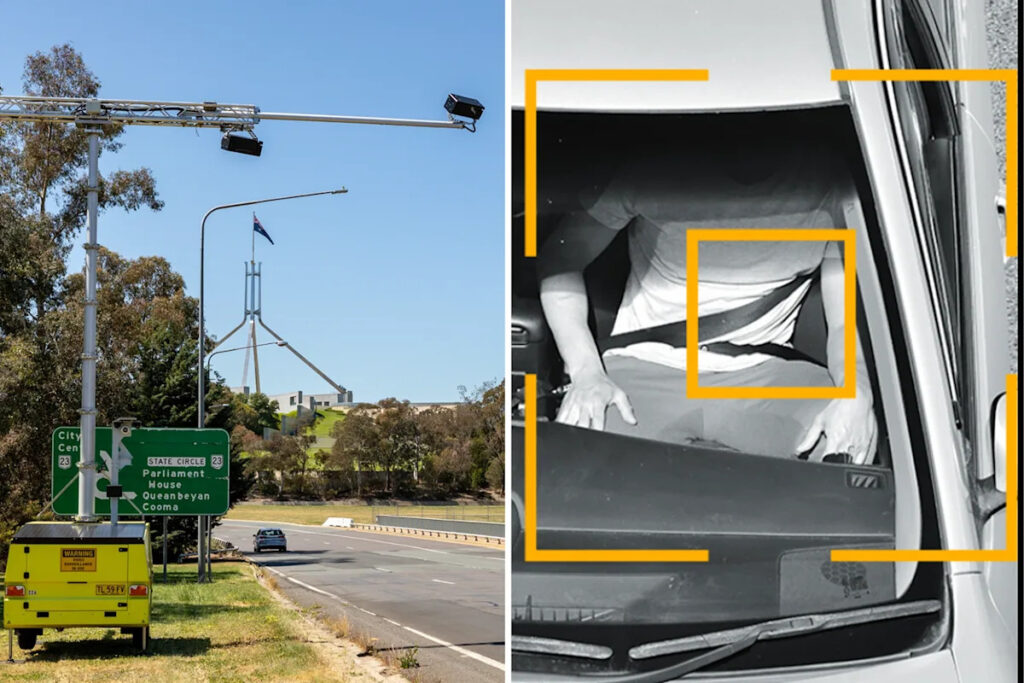
Australian drivers in the nation’s capital are set to experience a significant change on the roads as new mobile detection cameras begin targeting seatbelt offences. From November 3, motorists in the Australian Capital Territory (ACT) who fail to wear their seatbelts correctly will face fines of $574. This development is part of a broader initiative to enhance road safety by utilizing advanced technology.
Hayder Shkara, a prominent lawyer and director at the Collective Family Law Group, has highlighted the ongoing issue of seatbelt non-compliance, despite decades of public safety campaigns. “We still see seatbelt offences happening all the time,” Shkara told Yahoo News. “These new cameras will definitely mean that people will receive a shock when they realise that they have not been wearing their seatbelts correctly.”
Government Defends Enhanced Surveillance
The introduction of these cameras follows the Legislative Assembly’s approval of the Road Transport (Safety and Traffic Management) Amendment Bill 2025. This legislation broadens the scope of offences detectable by the territory’s traffic cameras. The ACT government has emphasized that the changes are part of ongoing efforts to reduce road fatalities and serious injuries.
“Seatbelts save lives,” declared ACT Attorney-General Tara Cheyne last month. Cheyne stressed that the initiative aims not only to hold offenders accountable but also to increase public awareness about road safety. An ACT government spokesperson confirmed that the mobile traffic detection network now includes three portable cameras and two fixed units, all capable of detecting seatbelt offences.
How the New System Works
The updated system allows for the detection of multiple offences simultaneously. “If multiple offences take place at the same time, for example, a mobile device and a seatbelt offence, both can be captured in one event and the images can be used to issue multiple infringements,” Cheyne explained. This capability is already in use through traditional police enforcement methods.
Seatbelts must be “properly adjusted and fastened,” meaning the clasp is buckled, the lap belt sits low and firmly on a person’s hips, and the sash sits over a person’s shoulder. Road safety experts advocate for the use of cameras as both a deterrent and an enforcement tool, addressing behaviours that are challenging for police to monitor in real-time.
Implications and Future Prospects
The move to enhance surveillance on seatbelt usage is part of a larger trend in Australia, where technology is increasingly used to enforce road safety laws. The ACT’s initiative could serve as a model for other regions considering similar measures. The use of artificial intelligence in these systems allows for comprehensive monitoring, from seatbelt compliance to speeding.
As the enforcement of these new measures begins, drivers are encouraged to ensure they and their passengers are wearing seatbelts correctly. The government has made provisions for individuals with medical exemptions, allowing them to submit documentation directly to Access Canberra.
Meanwhile, the broader implications of this initiative could lead to a nationwide reassessment of mobile detection camera usage. With road safety as a critical concern, technological advancements like these may become a staple in traffic management strategies across the country.
For more information or to share your story, contact: [email protected].







